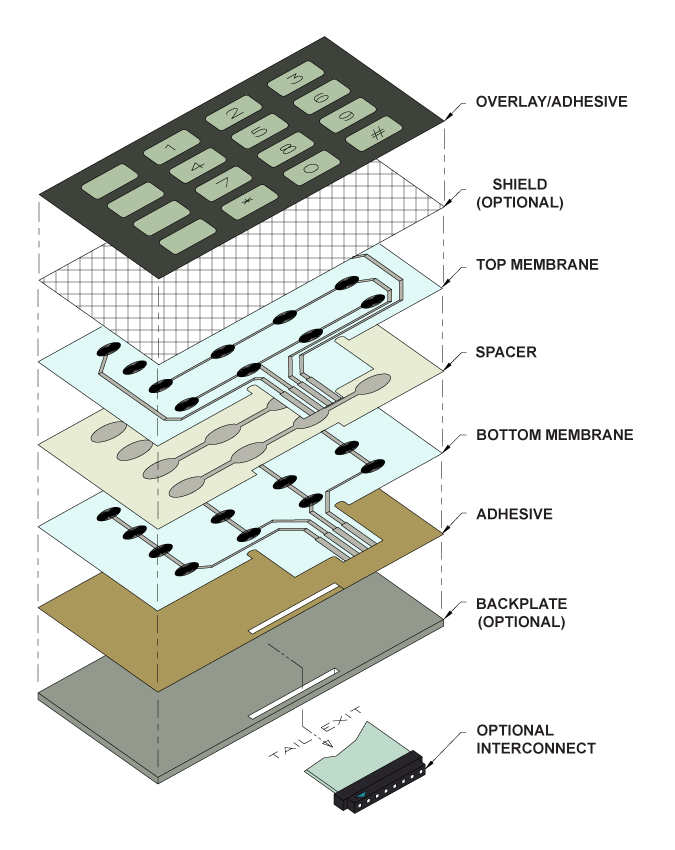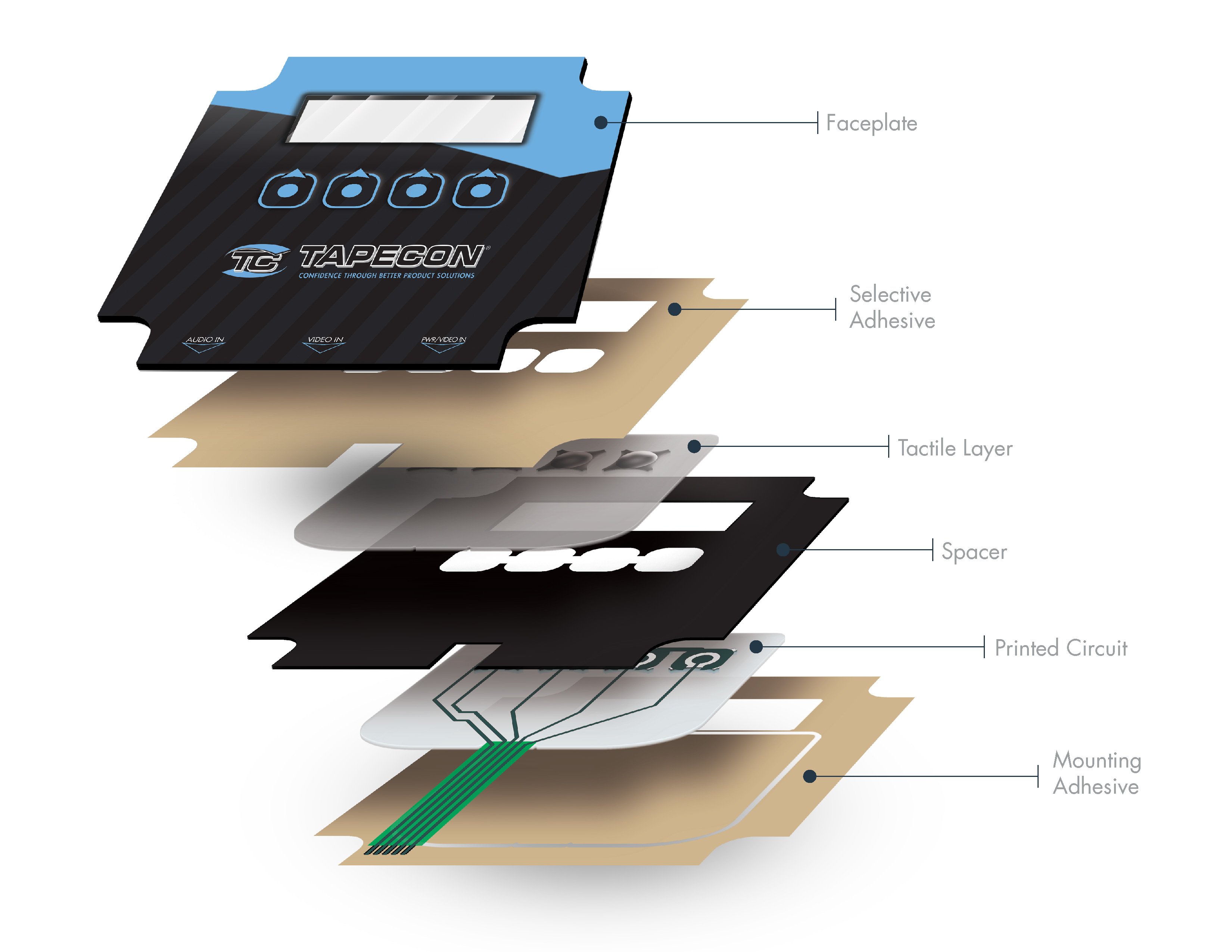Discover Just How a Membrane Switch Boosts Resilience and Functionality in Instruments
Discover Just How a Membrane Switch Boosts Resilience and Functionality in Instruments
Blog Article
Understanding the Capability of Membrane Switches Over for Customer Interface Instruments
The capability of membrane layer switches represents a significant development in customer interface layout, combining performance with visual flexibility. As sectors progressively prioritize customer experience, comprehending the nuances of membrane layer switch modern technology becomes crucial.
What Are Membrane Layer Switches?
Membrane layer buttons are innovative user interface tools that assist in customer interaction with electronic equipment. These versatile parts contain multiple layers, including a visuals overlay, spacer, and a published circuit layer. The style permits a smooth assimilation right into various digital tools, improving both the visual and functional facets of customer interfaces.
Membrane switches are commonly utilized in a variety of applications, from household devices to commercial machinery and medical tools. Their building normally features a slim account, making them a suitable selection for small designs. The tactile feedback supplied by these buttons can be crafted to meet particular individual choices, guaranteeing reliable communication between the user and the tool.
Resilience is another substantial benefit of membrane switches, as they are immune to dirt, dampness, and chemicals, which boosts their life expectancy popular environments. Additionally, these switches can be personalized in terms of shape, dimension, and visuals design, permitting branding and user-specific attributes. Generally, membrane changes represent a practical service for boosting user experience in electronic devices, combining capability with visual charm in an effective way.
How Membrane Switches Work
Operating on a simple principle, membrane layer switches utilize a split construction to register user input effectively. Each button contains numerous layers, consisting of a published circuit layer, a spacer layer, and a leading visuals layer, which are developed to collaborate effortlessly. When a customer presses the top layer, it compresses the spacer layer, bringing the conductive aspects of the circuit layer into contact with each various other.
This contact produces a closed circuit, signifying the tool to implement a details function. The style permits different arrangements, consisting of responsive comments, which can enhance the customer experience by offering a physical experience upon activation. The materials used in membrane layer switches commonly include adaptable substrates, such as polyester or polycarbonate, which ensure toughness and durability against deterioration.

Key Benefits of Membrane Buttons

One more significant benefit is their density. Membrane layer buttons are thin and light-weight, which enables makers to conserve area in their tools without compromising capability. This attribute is particularly useful in applications where weight and volume are essential factors to consider.
In addition, membrane layer buttons are resistant to dirt, dampness, and chemicals, enhancing their longevity. This resilience expands their lifespan and lowers the requirement for constant replacements, resulting in price savings with time.
Moreover, the responsive comments given by membrane browse around here layer buttons can be maximized to boost customer interaction. They can consist of functions such as increased switches or audible clicks, enhancing use and customer experience.
Applications Across Industries
Customer user interface devices making use of membrane layer switches prevail in a large range of markets, showcasing their flexibility and functionality. Membrane Switch. In the clinical sector, membrane buttons are important to tools such as analysis equipment and individual surveillance systems, where their durability and simplicity of cleansing are vital for preserving health standards. In the automobile industry, these buttons are employed in dashboard controls and infotainment systems, offering a streamlined and modern user interface for customers.
Furthermore, the consumer electronic devices industry take advantage of membrane switches in home appliances and handheld tools, where portable design and user-friendly user interfaces improve user experience. Industrial applications also leverage membrane switches for control panels in machinery and automation systems, emphasizing their toughness and resistance to extreme atmospheres.
In the aerospace and defense sectors, membrane switches are made use of in cockpit controls and tools, where reliability and performance under severe problems are vital. In addition, the gaming sector significantly includes membrane buttons in controllers and game equipments, contributing to an appealing customer experience. Overall, the versatility of membrane layer switches over allows their prevalent use throughout many markets, highlighting their importance in contemporary interface style.
Future Trends in Membrane Layer Switch Innovation

In addition, using advanced materials, such as polycarbonate and polyester movies, is anticipated to rise, supplying enhanced durability and resistance to ecological stress factors. These products add to the general durability of membrane layer switches, making them appropriate for harsher commercial applications.
Furthermore, the consolidation of clever technology, consisting of IoT connectivity, will certainly make it possible for membrane buttons to connect with other devices and systems, assisting in a more interactive individual experience. This fad lines up with the expanding need for smart devices across various fields, from healthcare to customer electronic devices.
Last but not least, modification options are prepared for to broaden, permitting suppliers to develop bespoke solutions customized to certain user needs and preferences. These growths will certainly place membrane layer buttons as necessary components in the development of customer interface innovation.
Verdict
In conclusion, membrane changes stand for a pivotal improvement in user interface modern technology, using a trustworthy and functional option for varied electronic applications. As innovations in material scientific research and touch sensing technologies continue, the functionality and applicability of membrane layer switches are expected to increase, strengthening their value in contemporary digital devices.
Report this page